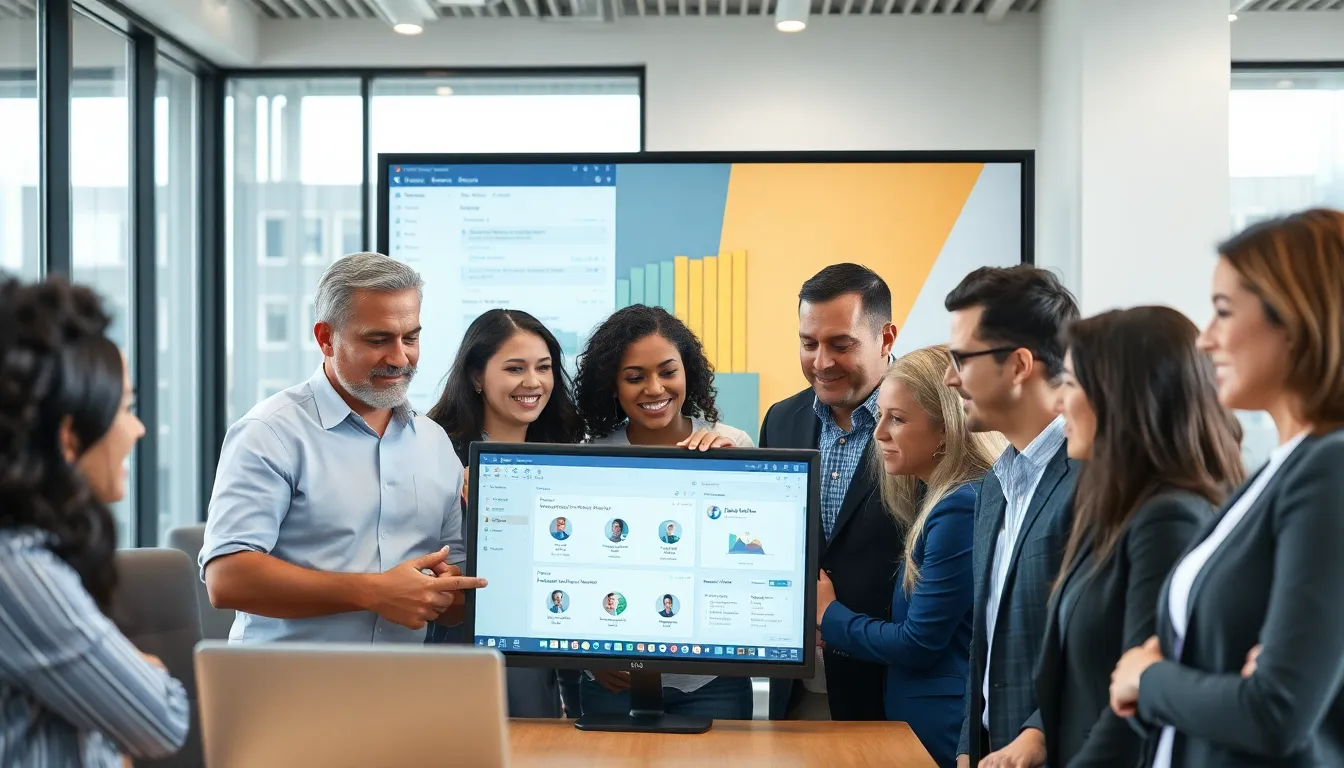In the fast-paced world of software, Product-Led Growth (PLG) is turning heads and reshaping the way companies approach their strategies. Imagine a world where users can dive into a product without a sales pitch, where the software practically sells itself. That’s the magic of PLG SaaS. It’s like having a party where everyone’s invited, but the best guests are the ones who can’t stop raving about the snacks.
As businesses scramble to keep up with the latest trends, understanding PLG SaaS isn’t just smart—it’s essential. This approach empowers users to experience the value firsthand, leading to higher engagement and retention rates. So, if you’re tired of the old-school sales tactics that feel like a bad first date, stick around. Discover how PLG SaaS can transform your product into the life of the party and keep customers coming back for more.
Table of Contents
ToggleWhat Is PLG SaaS?
Product-Led Growth Software as a Service (PLG SaaS) emphasizes using the product itself to drive user acquisition and retention. By focusing on delivering exceptional user experiences, companies encourage customers to engage deeply with the software without relying heavily on sales teams. Users often explore a product’s features through free trials or freemium models, which fosters a sense of ownership and satisfaction.
This approach places great importance on building a product that effectively demonstrates its value. Engaging interfaces, intuitive designs, and robust features contribute to a seamless onboarding process. Successful PLG SaaS models often utilize data analytics to understand user behavior, allowing for continuous improvements based on real-time feedback.
Building a community around the product enhances its appeal. Messaging platforms, forums, and social media channels connect users with peers, fostering collaboration and sharing of best practices. As customers learn from each other, they increase their investment in the product.
Retention rates benefit significantly from the PLG approach. When users see immediate value, they’re more likely to become long-term customers. The reduction of traditional sales tactics aligns well with modern consumer preferences, leading to a more engaged and satisfied user base.
Adopting PLG strategies often results in lower customer acquisition costs. Companies generate organic growth through word-of-mouth and customer referrals. PLG SaaS models not only drive user satisfaction but also create a sustainable path for scaling the business.
Key Features of PLG SaaS

Product-Led Growth Software as a Service emphasizes features that enhance user experience and retention. Companies leverage these characteristics to foster a compelling product journey for users.
User-Centric Design
User-centric design focuses on creating interfaces that prioritize usability and satisfaction. Engaging layouts guide users seamlessly through their tasks. Features such as intuitive navigation allow easy access to essential functions. Visual aesthetics contribute to an enjoyable experience, encouraging users to explore the software further. Implementing user feedback into design updates further enhances satisfaction. This iterative approach ensures that the product evolves alongside user expectations.
Automated Onboarding
Automated onboarding facilitates a smooth introduction to the software. Personalized walkthroughs guide new users through key functionalities, decreasing the learning curve. Interactive tutorials offer hands-on experience without overwhelming users. Clear, concise messaging points out crucial features, enhancing comprehension. The use of data analytics helps companies refine onboarding processes to address user pain points. Effective onboarding leads to higher engagement rates, crucial for long-term retention.
Benefits of PLG SaaS
PLG SaaS offers several key advantages that enhance the overall business model. Companies leveraging this approach see significant shifts in customer interactions and growth potential.
Enhanced Customer Engagement
Engagement increases as users directly experience the value of the product. When users try software without a sales barrier, they can explore features at their own pace. This autonomy creates a memorable first impression. Active participation leads to deeper product understanding and satisfaction. Users often feel more invested when they can interact freely. Incorporating user feedback further refines features, ensuring the product aligns with customer needs. By fostering community interactions, users can share tips and best practices, enhancing overall engagement.
Improved Scalability
Scalability improves as PLG SaaS enables organizations to expand without traditional constraints. Businesses can onboard new users efficiently through automated processes. This reduces the reliance on extensive sales teams, allowing resources to be allocated elsewhere. A seamless experience attracts a larger audience, amplifying organic growth through referrals. As user base expands, analytics assist in identifying trends, ensuring timely adjustments. The product’s effectiveness in meeting user demands determines the speed of scaling. By prioritizing user satisfaction, companies create sustainable growth pathways.
Challenges in Implementing PLG SaaS
Implementing Product-Led Growth SaaS presents several challenges that organizations must navigate carefully.
Integration Issues
Integration poses significant challenges for companies adopting PLG SaaS. Systems often need seamless connectivity with existing infrastructures, which can complicate the onboarding process. Users may experience frustration if integrating new products requires extensive technical adjustments. Moreover, compatibility between various tools is crucial for creating a cohesive experience. A lack of clear APIs can hinder these integrations, leading to delays in user engagement. Proper planning and resource allocation can mitigate integration problems. Companies often benefit from involving IT teams early in the implementation process to address potential issues.
Customer Retention Strategies
Effective customer retention strategies are essential for the success of PLG SaaS. Retaining users requires offering continual value through regular product updates and enhancements. Engaging users through personalized content can deepen their connection to the product. A user community fosters loyalty, allowing customers to share experiences and solutions. Utilizing data analytics to track user behavior aids in optimizing retention efforts. Building a feedback loop encourages users to voice their needs, guiding product development. Proactively identifying at-risk customers and addressing their concerns can further improve retention rates. Each of these strategies reinforces the importance of maintaining a strong relationship with users.
Embracing Product-Led Growth SaaS can redefine how companies approach user acquisition and retention. By focusing on the product’s inherent value rather than traditional sales tactics, businesses can create more engaging experiences that resonate with users. This strategy not only enhances customer satisfaction but also fosters community connections that drive organic growth.
As companies continue to adapt to modern consumer preferences, the emphasis on user-centric design and automated onboarding becomes increasingly vital. By addressing integration challenges and prioritizing ongoing value, businesses can cultivate lasting relationships with their users. Ultimately, adopting PLG strategies paves the way for sustainable success in the competitive software landscape.




